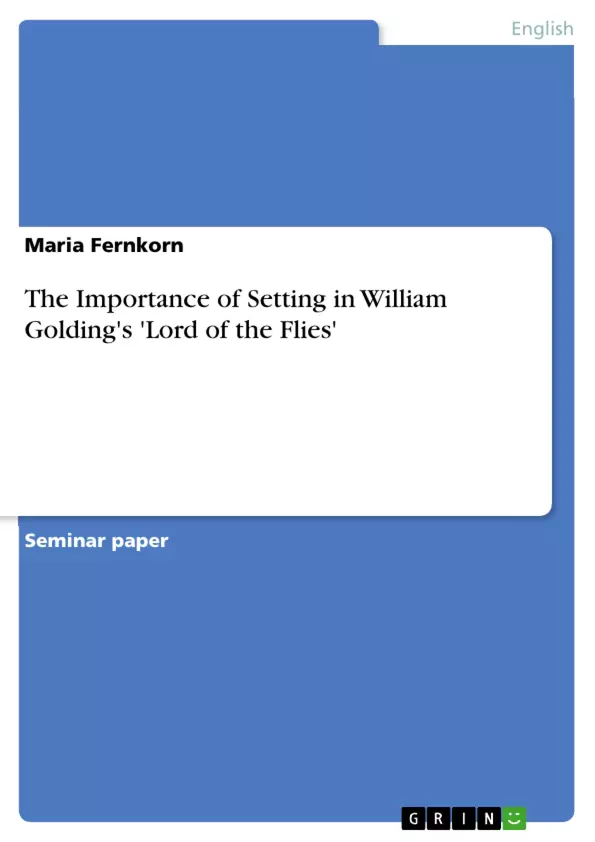In all the books I have suggested a shape in the universe that may, as it were, account for things. The greatest
pleasure is not -say- sex or geometry. It is just understanding. And if you can get people to understand their
own humanity-well, that’s the job of the writer.2 William Golding
William Golding’s first novel Lord of the Flies3 is one of the most-read works of contemporary fiction since the Second World War. The author’s most popular fiction was written in 1954 and has been interpreted politically, religiously, anthropologically and psychologically although the story as such is quite simple. However, what makes the book remarkable is how excessively Golding uses the setting in order to get across the fable’s moral. The setting of the robinsonade is highly allegorical. In the following paper this is going to be proved on hand the following definition: Setting is the entire environment for the action of a fictional work. Settings include the place, the time period as well as the historical milieu, and the political, social, and perhaps even spiritual realities (italics: mine).4 In addition to that, also the presentation of nature and its symbolism are going to be examined as they play an important role throughout the book and are part of the setting.5
- Quote paper
- Maria Fernkorn (Author), 2003, The Importance of Setting in William Golding's 'Lord of the Flies', Munich, GRIN Verlag, https://www.grin.com/document/55441



